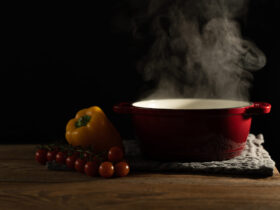Milk and cream are staples in our diets, but how much do we really know about them? Let’s dive into some fascinating questions about milk and cream.
Types of milk
Raw Milk (3.5%-5% fat): Raw milk has the most flavor and fat content. However, it has a short shelf life of about 3 days due to being untreated.
Whole Milk (3.5% fat): In industrial production, whole milk is completely skimmed and pasteurized. Then, the cream is added back in the exact necessary amount.
Reduced-Fat Milk (1.5%-1.8% fat): Similar to whole milk, it’s skimmed and then enriched with cream. It has a significantly milder taste compared to whole milk.
Skimmed Milk (under 0.5% fat): With hardly any fat content, skimmed milk barely tastes like milk and is unsuitable for kitchen use.
Condensed Milk: Available in full-fat, semi-skimmed, and skimmed versions, about 60% of the milk’s liquid is evaporated, resulting in a thick, caramel-flavored milk paste.
Milk Powder: Water is completely removed from milk powder, available as whole, semi-skimmed, and skimmed. It’s commonly used in industrial products and coffee machines and sometimes in upscale culinary applications.
Fortified Milk: Vitamins and/or minerals are added to fortified milk, often used for pregnant women and the elderly.

Milk pre-treatment
Raw Milk: Virtually untreated and has a short shelf life.
Microfiltered Milk: Initially skimmed, then filtered through very fine membrane sieves, removing bacteria and microorganisms. Tastes similar to raw milk because only the cream is heated.
Thermized Milk: Heated for 15 seconds at 57°C – 68°C. Primarily used in cheesemaking, not available commercially, aiming to mimic raw milk.
Pasteurized Milk: Heated to 72°C – 85°C for 20 seconds, killing 99.9% of the bacteria in raw milk. However, this process diminishes the milk’s flavor.
UHT Milk (Ultra High Temperature): Heated for a few seconds at 140°C-155°C. UHT milk has lost almost all of its original milk flavor.

Milk facts
Skin Formation: Heating milk causes proteins to coagulate, forming a skin on the surface. Covering the pot after boiling prevents further skin formation.
Milk Boiling Over: The skin on the surface traps fat molecules, which rise due to heat. As the milk thickens, steam bubbles beneath the skin can’t escape, causing it to boil over. Placing a wooden spoon in the pot can prevent both skin formation and boiling over.
Digestibility of Milk: As lactose is present, the body requires a specific enzyme, lactase, for digestion. Most people lose lactase after early childhood. Despite this, genetic mutations allow many in Europe and North America to digest milk easily, while populations in Southeast Asia, Africa, and South America may have less tolerance.
Why does milk boil over?
The skin formed on the surface holds back the fat molecules, which, however, rise due to the heat. Heating thickens the milk, preventing the steam bubbles under the skin from escaping. They push everything upwards, causing the milk to boil over. Placing a wooden spoon into it can prevent both the formation of the skin and the associated boiling over.
Creamy questions
Why Can’t You Heat Light Cream?: Lower-fat products risk curdling when in contact with acidic foods. Use full-fat products for sauces to avoid this outcome.
Drawbacks of Skimmed Products: Light milk products lack taste and natural consistency. Thickeners like locust bean gum or modified starch are often added to restore texture, but they don’t add much to quality or taste.
Whipping Cream: Contains about 35% fat, essential for creating a stable cream mass. The colder the cream, the better, as the fat molecules are firmer.

Why are milk based products harder to digest in old age?
Due to the lactose content, the body requires a special enzyme called lactase. Lactase disappears after four or 5 years of age. Through a genetic mutation thousands of years ago, milk can be digested easily even though the body would typically require lactase. For this reason, nearly 80% of the population in Northern Europe and North America can digest milk almost without any issues, while populations in Southeast Asia, Africa, and South America tolerate dairy products less well.
Final thoughts...
Understanding the nuances of milk and cream not only enhances our culinary experiences but also gives us a deeper appreciation for these everyday ingredients. Whether it’s the process of milk treatment or the science behind whipping cream, there’s always more to learn about these dairy products.














Leave a Reply
View Comments